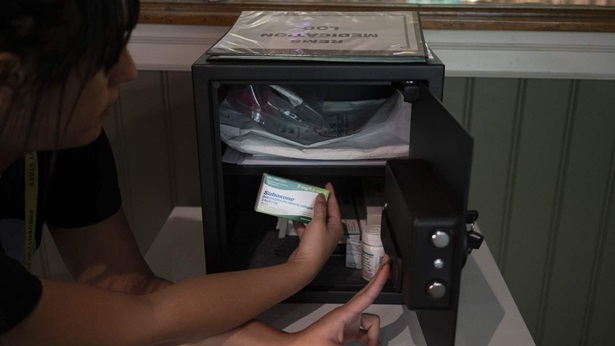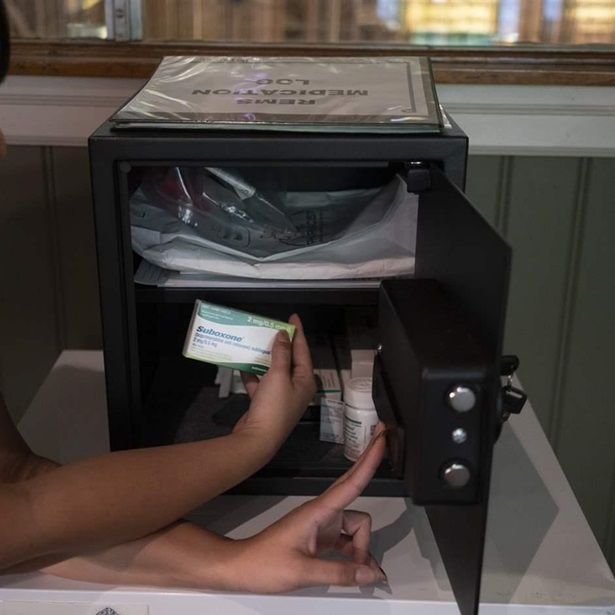States Provide Greater Flexibility for Prescribing Opioid Use Disorder Medications During the Pandemic
Giving nurse practitioners and physician assistants more authority can help address treatment gaps

As the COVID-19 pandemic complicates access to opioid use disorder (OUD) treatment and as states grapple with increases in overdoses, governors and state legislatures have implemented emergency policies that expand the availability of proven medications to manage OUD.
Some states, for example, have made it easier for nurse practitioners and physician assistants to directly provide buprenorphine to patients in need. The drug is one of three Food and Drug Administration (FDA)-approved medications proved to treat OUD by alleviating painful symptoms and reducing risk of fatal overdose. These qualified health care professionals can play a crucial role in expanding access to medication for OUD as permitted under federal law.
In 2016, Congress enacted the Comprehensive Addiction and Recovery Act, which temporarily authorized nurse practitioners and physician assistants to prescribe buprenorphine in office-based settings after completing training and obtaining a Drug Enforcement Administration (DEA) waiver. In 2017, however, 44% of all counties nationwide still lacked a waivered provider. Then Congress in 2018 passed the SUPPORT for Patients and Communities Act, which granted nurse practitioners and physician assistants permanent prescribing authority with the DEA waiver and included clinical nurse specialists, certified registered nurse anesthetists, and certified nurse midwives on the list of eligible prescribers for a five-year period ending in 2023.
This led to a surge in clinicians with waivers, particularly in rural areas that lacked buprenorphine treatment capacity, but state laws still often restrict nurse practitioners and physician assistants from taking full advantage of this provision by requiring them to be supervised by or collaborate with a waivered physician to prescribe buprenorphine.
Changes in state supervision requirements amid the pandemic
To increase treatment options during the pandemic, Maine issued an executive order suspending all mandatory supervision or what are known as collaborative practice agreement requirements for nurse practitioners and physician assistants for the duration of the state’s declared public health emergency. The agreements are written statements outlining the complementary working relationship with a physician.
Other states have not eliminated the waiver requirement but have taken other steps to facilitate the prescribing of medication for OUD by these clinicians. Kentucky, for example, temporarily waived collaborative practice requirements with physicians as a prerequisite for nurse practitioners to prescribe controlled substances, which include medications for OUD.
New Jersey temporarily waived its rule requiring registered nurses to obtain authorization from a collaborating physician before dispensing narcotic medications for maintenance or detoxification treatment. The state also temporarily suspended supervision requirements for physician assistants and the need to obtain authorization to order or prescribe a controlled substance.
Although a few states have followed suit by temporarily suspending all physician supervision requirements for nurse practitioners and physician assistants, others have placed conditions on these more flexible rules. For example, Virginia suspended supervision requirements only for nurse practitioners and physician assistants who have at least two years of clinical practice experience.
Similarly, Massachusetts suspended requirements for nurse practitioners with at least two years of supervised experience or its equivalent, as specified in the guidance. The state also temporarily eliminated prescriptive practice guidelines, which specify when consultation with a provider is needed for these clinicians to prescribe medication.
Other states have provided greater flexibility on supervisory requirements without suspending them altogether. For example, Missouri waived the requirement that nurse practitioners practice within 75 miles of their collaborating physician, while California waived limitations on the number of nurse practitioners whom physicians can supervise who are able to furnish or order medications.
With these changes, states are allowing nurse practitioners and physician assistants to use their waivers to prescribe buprenorphine to the full extent of their licenses. These provisions align with federal laws and should be continued after state emergency declarations expire. That would help expand the pool of eligible providers who can offer medication treatment to patients with OUD. Such flexibility is particularly important as states cope with increases in overdose deaths and a growing need for access to treatment.
Beth Connolly is a director and Vanessa Baaklini is an associate with The Pew Charitable Trusts’ substance use prevention and treatment initiative.













